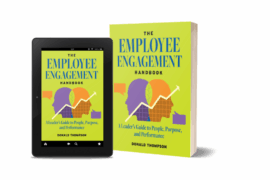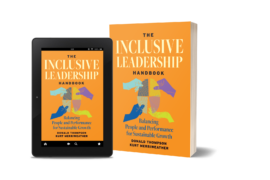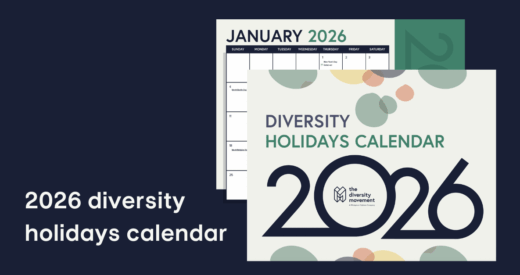Every business aims for consistent growth, yet achieving that goal is difficult unless employees are encouraged to grow as much as market share. That’s why high-performing organizations don’t leave professional development to chance. Instead, it is a core business strategy.
As research from McKinsey makes clear, “a culture of continuous learning” is a significant advantage in today’s uncertain economic environment. When employees build new skills and gain experience, they become more effective in their roles and more prepared for future leadership. This prepares the organization to scale more smoothly, meet shifting business needs, and stay ahead of competitors.
One of the most effective ways to help employees grow is through mentorship. And, when leaders also act as sponsors, the result is an environment that promotes skill-building, innovation, and career growth. By supporting employees’ professional goals, leaders demonstrate that they care about their team’s success, creating a culture that attracts and retains top talent.
The Role of an Effective and Involved Mentor

Mentorship accelerates learning, and the individual’s growing expertise can help boost team performance and efficiency. Internal mentoring relationships improve collaboration and facilitate knowledge transfer—key ingredients for innovation and long-term organizational success. The most effective mentors also help people align their goals and values with their professional role, helping employees feel valued and making their work more meaningful.
“Mentorship can be an effective tool for nurturing feelings of belonging and inclusion. Mentors are especially helpful in learning how to navigate workplaces where dimensions of one’s identity are currently or typically underrepresented,” says Jackie Ferguson, Vice President of Content, Products and Programming at The Diversity Movement, a Workplace Options company.
Mentors help employees grow by providing perspective, encouragement, and guidance. Formal mentoring programs match individuals with experienced colleagues who can help clarify goals, provide feedback, and support skill development. These programs are particularly valuable for new hires, high-potential talent, and employees from underrepresented groups who may lack access to professional networks or role models.
Informal mentoring relationships are equally powerful. Whether it’s a seasoned peer offering advice or a leader checking in periodically, informal mentors help employees feel seen, supported, and connected—within a specific organization or the general field.
Early in his career, Dan Martin, founder and owner of Helios Marketing, was working an entry-level job in the marketing department of a large financial services firm, even though his degree was in journalism. A pivotal conversation with a senior executive convinced Martin to stick with marketing.
“He asked me what I wanted to do with my career and then told me all the things he loved about marketing,” recalls Martin. “He was right about so many things, and that conversation was such an important launching point to where I am in my career today.”
The Impact of Strategic Sponsorship
Sponsors, by contrast, focus less on skills-building and more on career advancement. They use their organizational influence to advance the careers of high-performing employees, especially those from historically excluded or underrepresented groups. They recommend protégés for high-profile projects, open doors to executive visibility, and champion their advancement in decision-making spaces.
Sponsorship helps close opportunity gaps, increases leadership diversity, and ensures that top talent is seen and supported across the organization. Companies that promote a culture of sponsorship see measurable gains in retention, advancement, and performance across all levels.
Kai Weidie, Senior Vice President of Diversity, Equity, and Inclusion at Dentsu Media, says people should have both kinds of advisers—from inside and outside their organization—to gain a variety of perspectives.
“Don’t be afraid of approaching mentors who are not like you. There is so much value in your personal advisory board being diverse and inclusive,” she says. “Your board can be people who are just mentors, and not sponsors, or just sponsors and not necessarily mentors. But they are all people who are invested in you.”
How organizations can support mentorship opportunities

When executive leaders support mentorship across the organization, they signal that career development is part of the culture. Learning becomes a shared expectation, not just an individual initiative. Even if the organization doesn’t have a formal mentorship program, leaders can serve as mentors themselves, or they can introduce their colleague to prospective advisers in their network.
“When it comes to finding mentors, people often try to over-structure it,” says Trier Bryant, founder of TrierBryant.com, a consulting firm that advises organizations on strategies to improve workplace culture. “If I’ve reached out to you at least two times and you’ve given me advice, if we have been in conversation and I’ve come to you with questions, if we’re in dialogue—then you’re a mentor.”
Both formal and informal mentorship matter. Whether it’s a seasoned colleague offering guidance or a cross-functional program connecting newer employees with leaders, mentoring supports internal mobility and strengthens organizational trust.
To promote mentorship across your organization:
- Pick your approach. Decide whether your initiative will be formal (with matched pairs) or informal (with employees encouraged to find their own mentors).
- Identify your goals. What do you want to accomplish? Align your objectives with the company mission and employee needs.
- Create a framework. Draft guidelines for how to recruit and connect participants, how often to meet, and how to measure progress.
- Set expectations. Ensure mentors and mentees understand their responsibilities and how each will be held accountable—to each other in informal programs or to the program manager in formal settings.
- Provide support. Designate a liaison or program manager who can address concerns, answer questions, and keep the mentoring relationships on track.
- Share success stories. Share data and stories about positive outcomes to attract future participants and demonstrate the value of mentorship.
Make Career Development a Shared Responsibility
Creating a culture of continuous learning starts at the top. When senior leaders champion personal and professional growth, they send a powerful message: Career development is part of how we work, not something extra.
Future business success depends on nurturing talent across generations, geographies, and identities. And that means helping people grow not just through projects and performance reviews, but through intentional relationships rooted in trust and advocacy.
Our experts can give you the tools to communicate effectively, give better feedback, and create an inclusive environment where all workers feel a sense of belonging. Learn more about our Inclusive Leadership for People Managers workshop.
Amber Keister is a Content Strategist at The Diversity Movement. She has spent more than 20 years as a journalist for publications throughout the South. Connect with her on Linkedin.




